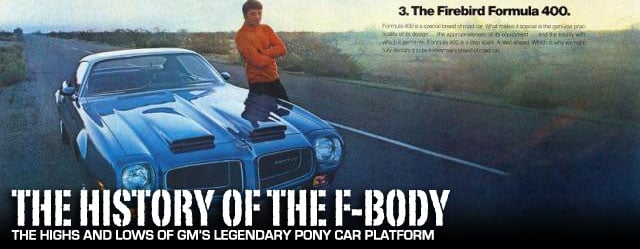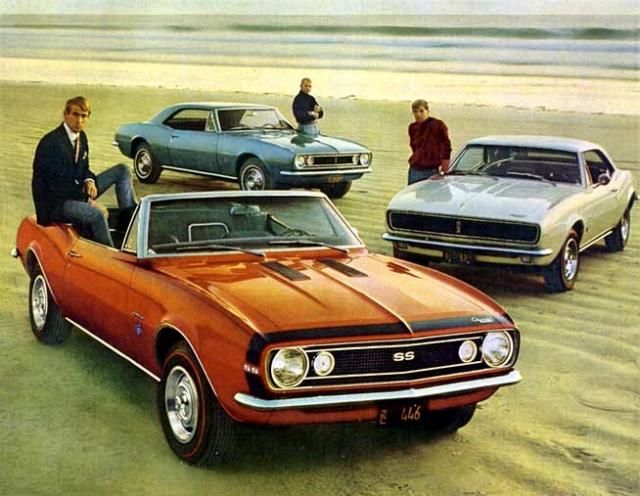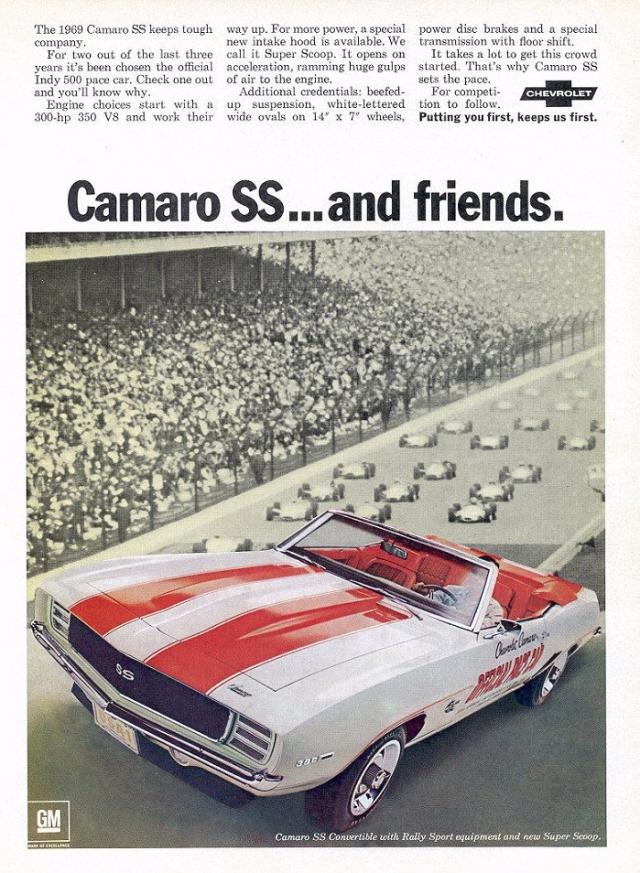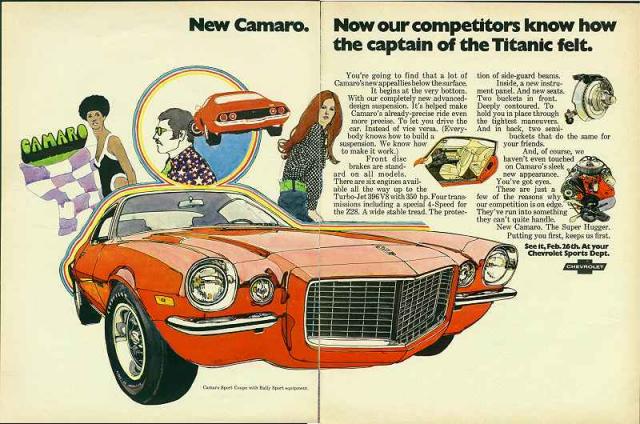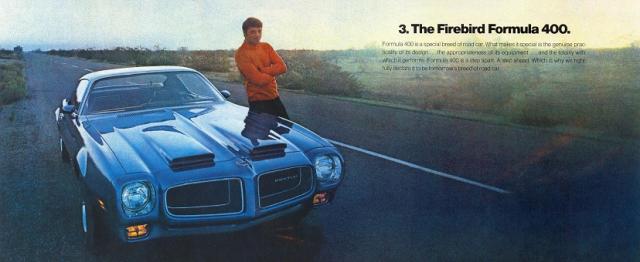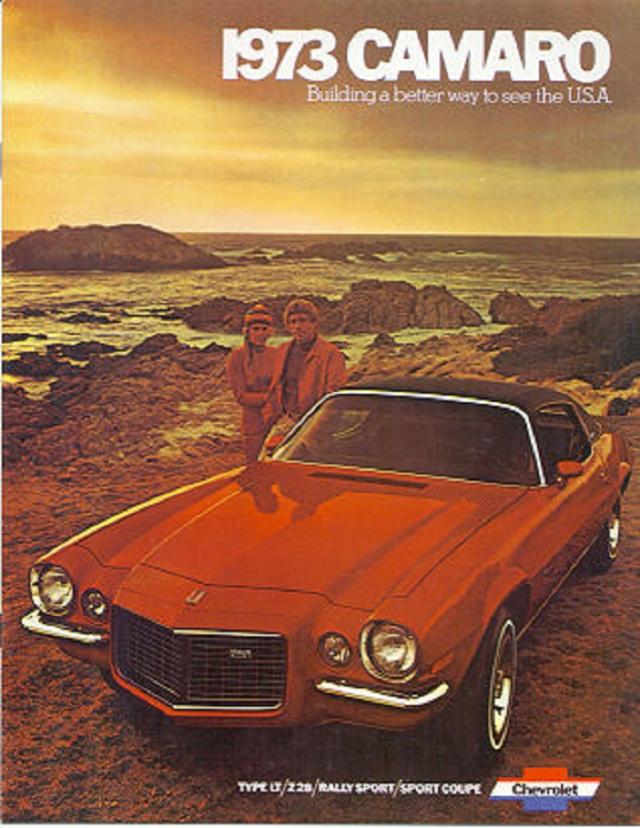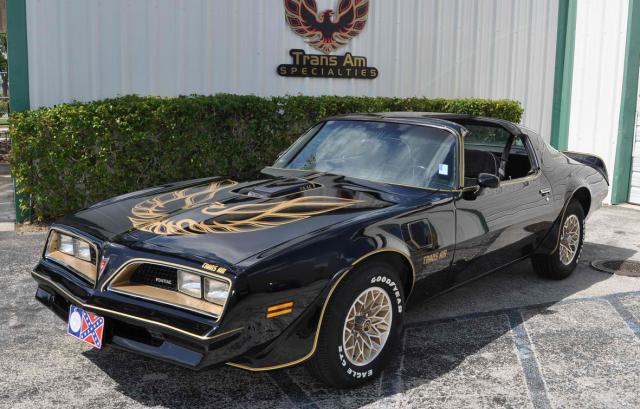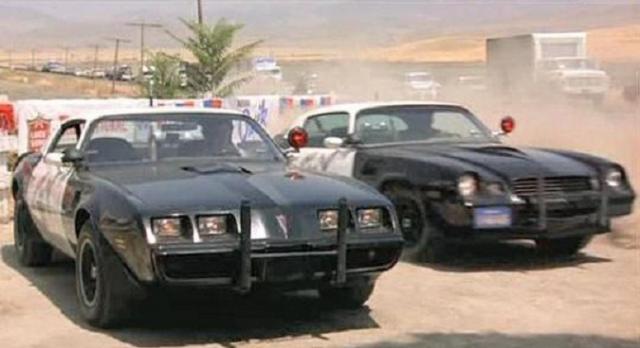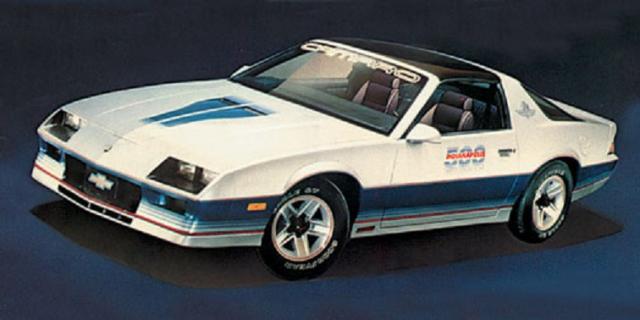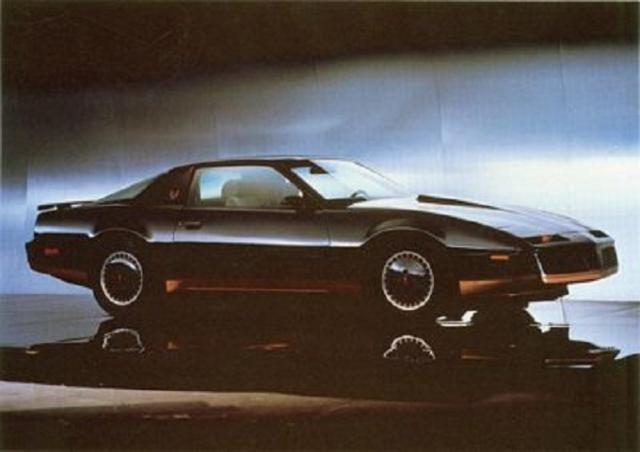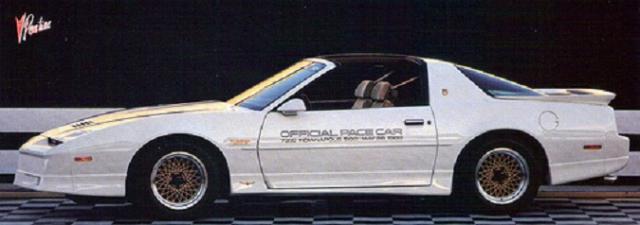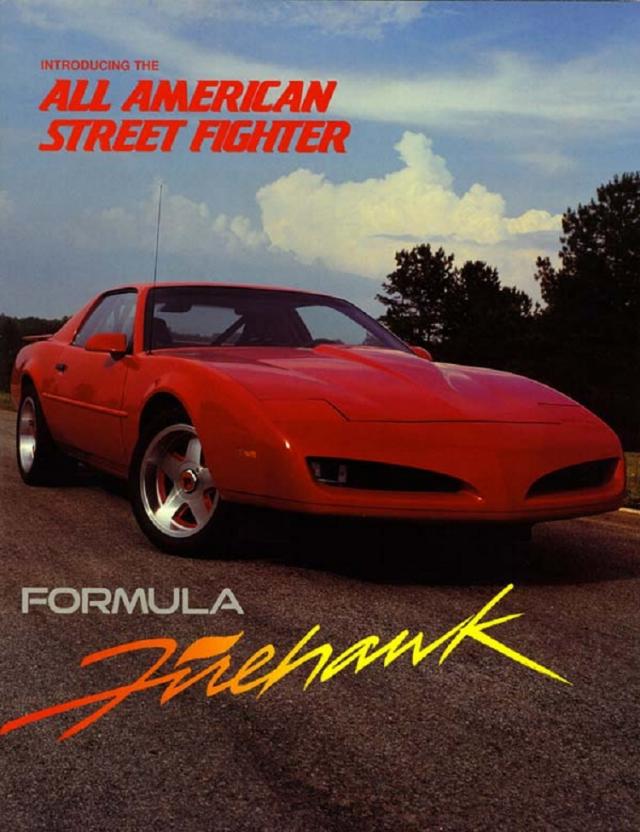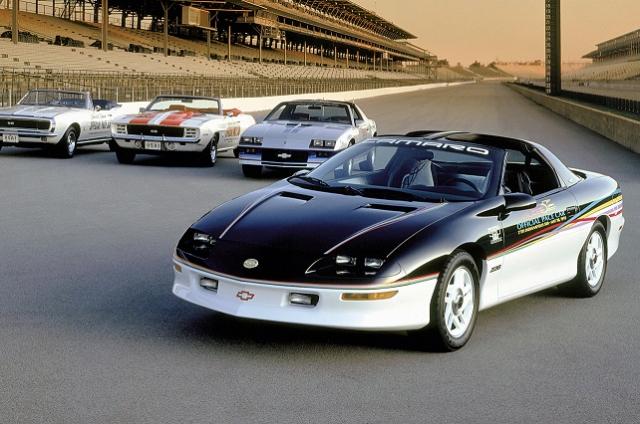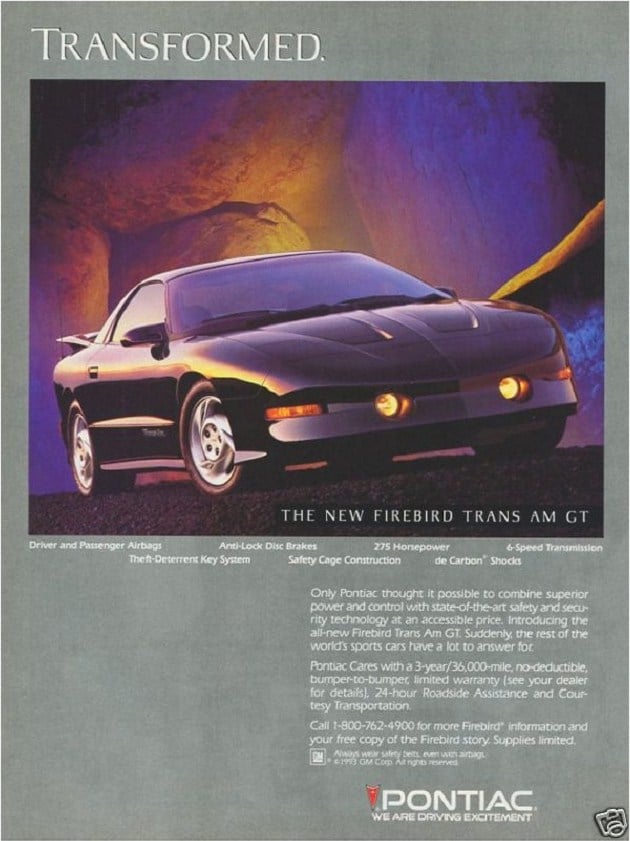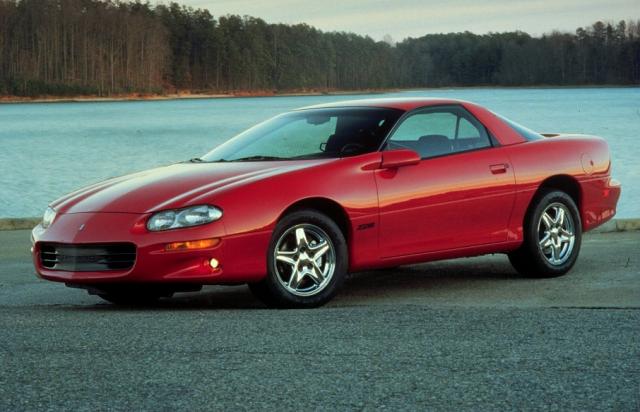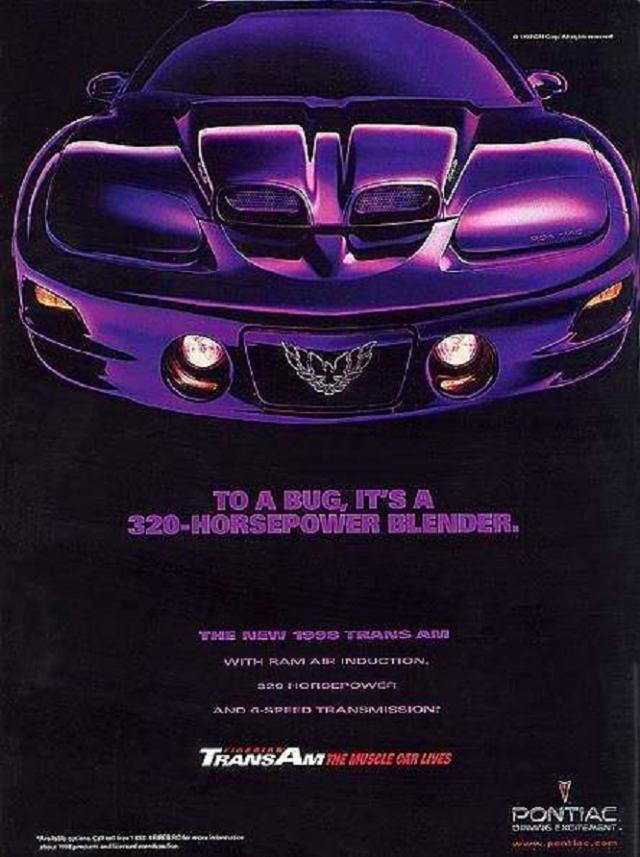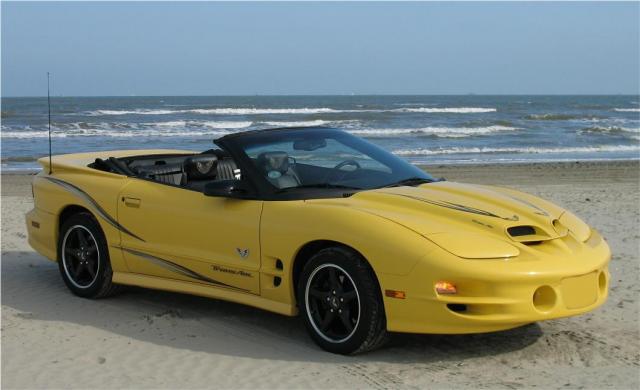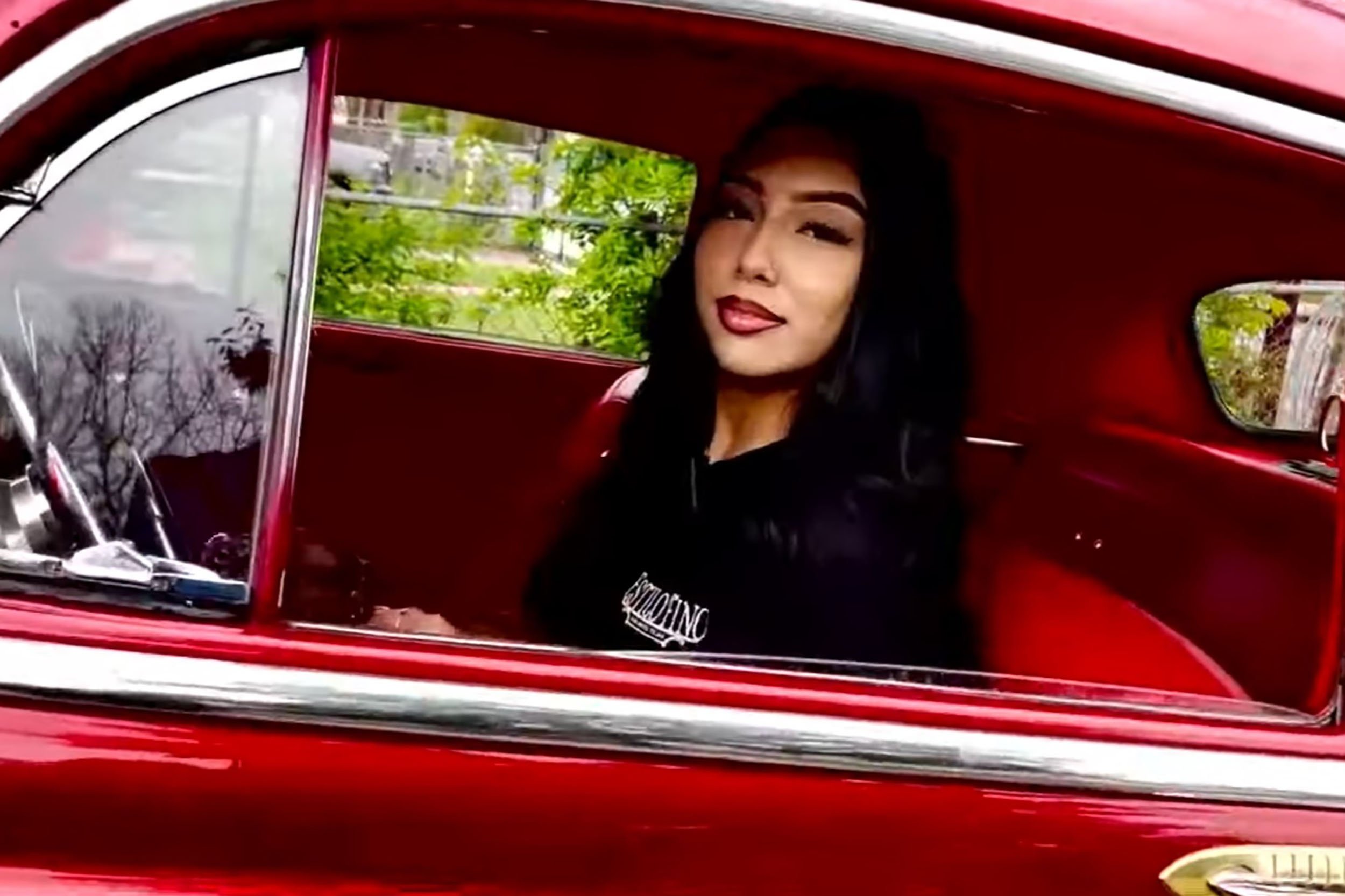The Camaro went on sale September 29th, 1966 for 1967. Five months later, the Firebird hit the scene and it would live alongside the Camaro through 2002.
In honor of our departed F-bodies, let’s take a a moment to look back through its 35-year timeline to see some of the good, and not so good times of our favorite pony car.
1967
The Camaro was elected to handle pace car duties for the Indianapolis 500. Both cars came in coupe and convertible, with a variety of engines and trim packages to choose from; Rally Sport (RS), Super Sport (SS), and Z/28 for Camaro and Sprint and High Output (H.O) for Firebird.
There were a whole range of engines to choose from. Buyers of the Camaro had an available 327 developing either 210hp or 275hp, or a new, 350cui engine that gained you entry into the SS, with 295hp. Pony up for the big block option, meant you could’ve had either a 325hp or a 375hp 396 under the hood of your new Camaro.
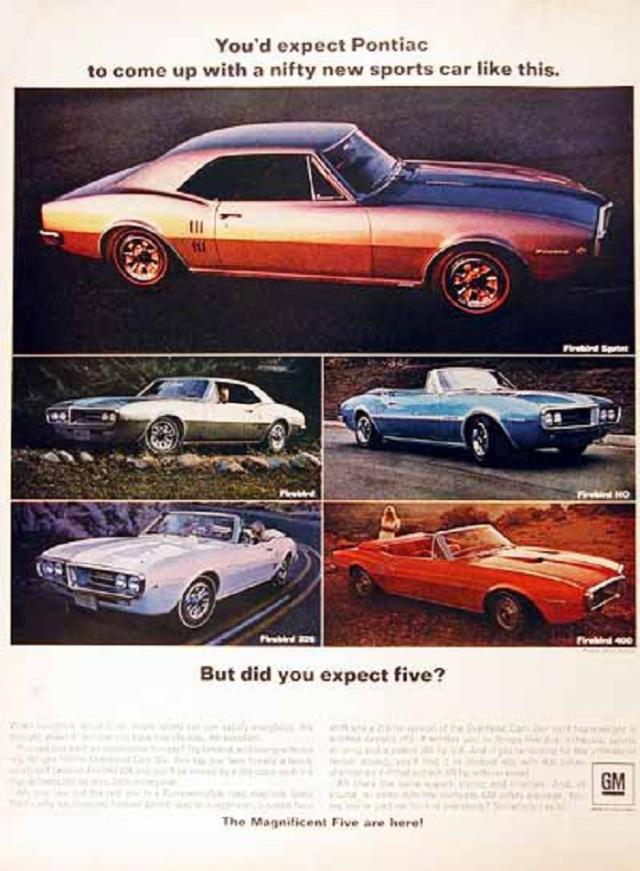 But for the road racer, there was a little-know option package dubbed Z/28, which packed a 302cui ‘plant under its hood.
But for the road racer, there was a little-know option package dubbed Z/28, which packed a 302cui ‘plant under its hood.
The engine was said to produce between 350-400hp, despite its factory rating of 290hp.
Firebird owners weren’t left out of the performance equation, however. Buyers could order up either a 250hp or 285hp (H.O) 326cui, or go big with the 400cui packing either 325hp or 335hp (w/ Ram Air).
1968
Pontiac replaced the 326 with a pair of Pontiac-built 350’s with either 265hp or 320hp. But for the true enthusiast, a choice of four 400cui engines to choose from, ranging from 330hp-340hp.
Contrary to the Firebird’s changed engine offerings, the Camaro’s engine roster remained carry-over from the 1967 model year, with the exception of a rare aluminum-head L98 option for the 396.
Both cars receive revised styling. A Trans Am model made its introduction, and it was in response to the rising popularity of the race series of the same name.
Although the race-spec Firebirds would be powered by a 303cui engine, the production model was equipped with the 400cui plants, ranging in horsepower from 335-345.
All were painted white with blue stripes, and were equipped with Ram Air hoods, heat-extractors, and a tall rear deck spoiler.
The Camaro was chosen to pace the Indy 500 again. These were available with your choice of the 350 (300hp), or the 396 (325-375hp).
There were Z10 “Pace Car coupes” produced, although none were actually at the race, and nor did they come equipped with door decals or the orange houndstooth interior.
We saw the Yenko S/C this year too, powered by a 425hp 427. Don Yenko produced “Super Camaros” during ’67-’68, but ’69 would mark the only year that the L72 would be installed from the factory. This was the last Yenko-modified Camaro until 1981.
1970
The F-body undergoes reconstructive surgery.
The Z28 had its DZ302 engine replaced by the 360hp 350 LT1, an exclusive only to Z28. The engines remained the same, otherwise. The RS trim and appearance package was changed. Gone were the hideaway headlights of previous years and in their place went a set of split front bumpers and a pair of parking/turn indicator lamps that were relocated next to the headlights from under the bumper.
The Sprint and H.O models were dropped, and in their place went in the Esprit and Formula. Esprit was a luxury trim package on the base ‘Bird, while the Formula was what the old H.O used to be; a stripped down, no nonsense version of the Trans Am.
The Formula came standard with a functional Ram Air hood, and the Trans Am had a new Shaker hood scoop. It also packed a set of fender-mounted heat-extractors, aerodynamic side-view mirrors, a rear mounted spoiler, and a front air dam to further aid in aerodynamics. This time around however, the T/A would be available in either white with a single, center blue stripe, or blue with a white stripe.
The power plant lineup was advertised in both gross and the new net ratings. The Z28’s LT-1 lost 30hp as a result of lower compression. The “396” was gone, and in its place went a 402 with 300hp. Both of the available 350’s also lost power as well; 245hp for base and RS and 270hp for the SS.
Pontiac stuck an available 455cui plant producing 325-335hp between the fenders of their Formula and Trans Am models.
1972
Gone were the old gross horsepower numbers, and in their place was the new SAE net rating that we still use today. The cars were basically carried over.
1973
The Camaro introduced a new trim level called the Type-LT (luxury touring). It was considered to be its own model, and even the Z28 or RS package could be applied to it. The SS was dropped from the roster entirely, along with its optional big block.
The Trans Am was no longer a two-color package; gone was the white/blue color scheme. Most Firebird colors were available for the first time on Trans Am. As an added bonus, one could order a massive hood bird that graced almost the entire bonnet of the car, which themselves would go on to be a staple of the seventies. A rare Super Duty (SD) 455 version was built this year, packing 310hp.
1974
The bodies were a continuation of the previous years, but with new front and rear fascias. The long-running Chevy 307 and Camaro RS disappeared from the engine roster this year.
1975
The RS Camaro returned. The SD Firebird and the Z28 were killed, leaving the Type-LT as the top dog in the Camaro lineup. Both cars received a new rear window.
1976
Styling for the Camaro went unchanged, but the Firebird got a set of revised front and rear fascias in time for Pontiac’s 50th birthday. In fact, a limited edition model Trans Am painted in Starlight Black and pinstriped in gold, was included as an option this year. Called the Limited Edition T/A, it would introduce the world to the T-top Trans Am, and later return the succeeding years as the Special Edition (SE) Trans Am though 1981.
1977
The Z28 returned, and the film, Smokey and the Bandit came out. The Special Edition (SE) T/A would fly off of the showroom floor as a result.
1978
Camaro received a makeover, although the Firebird didn’t. Both cars saw suspension improvements this year; the Camaro made due with a few tweaks, while the Firebird was released with a new option called the WS6 package. Available only on Trans Ams, the WS6 included the 400cui W72 (220hp), 4-wheel-disc brakes, thicker sway bars, stiffer springs, 15” aluminum wheels, and quick-ratio steering boxes. A gold (Y88) T/A SE became available this year, pin-striped in dark brown.
1979
The Type-LT was dropped. The Berlinetta filled its place, and would continue to do so through the 1986 model year. The Camaro’s 305 produced 130-135hp, while the 350 pumped out 165-175hp.
The Firebird line got updated styling, which included front and rear fascias, and new taillights. Pontiac dropped the gold Y88, but replaced it with a silver 10th anniversary Trans Am. Available in either the Olds 403/automatic or the Pontiac 400 W72/4-speed combinations, they were used at the 1979 Daytona 500.
1980
The Z28 gets a few cosmetic changes, and an additional 15hp for a total of 190. A 305 with 165hp was available for $50 credit over the base price. For Firebird, all versions of the 6.6L disappeared, as did the 350 Chevy. A turbocharged version of the 301 (210hp; Formula, Trans Am) made its introduction.
The Turbo T/A would be elected to pace the Indy 500 for the first time in Firebird’s history.
1981
The RS Camaro was dropped. The Z28 came standard with the 305 (165hp), but buyers could opt for the 175hp 350 –as long as they could deal with the now-mandatory slushbox transmission. This would be the last year ever for Pontiac-built engines, and the last year for an available 350 for the Camaro until 1987. Don Yenko through his hat into the ring one last time with a turbocharged, 350-equipped Z28 known as the Turbo-Z. 19 were built.
The 200hp Turbo T/A would go on to pace the Daytona 500 that year.
1982
The 3G is born. The coupes were lower, lighter, smaller and more aerodynamic than their predecessors. The Camaro lineup was as it was the previous year; base, Berlinetta, and Z28. A Firebird S/E replaced the Formula, and there was still a base model and a Trans Am available.
Pontiac no longer built their own engines, and the roster was virtually identical across the board for both cars. The Z28 and Trans Am could be ordered with either the standard 145hp 305, or the Cross-Fire 5.0L with 165hp.
The Camaro was picked again for Indy 500 Pace Car duties. The Trans Am would go on to get a gig in Smokey and the Bandit III, and a reoccurring role on the TV series Knight Rider.
1983
All powertrains would receive a bump in power across the range. Halfway through the model year, the Cross-Fire was discontinued, and in its place went a 190hp H.O 305.
The Trans Am offered two special editions; the black/gold Recaro Edition and Daytona 500 Edition T/A’s, the former included gold Turbo-finned wheels, Recaro tape door handle inserts, the latter carried a two-tone white over gray color combination with a matching interior. The cars had a WS6 performance/handling package, leather-trimmed Recaro luxury/sport seats, among other comfort/convenience, features.
1984
This was a carryover year, but otherwise saw the 15th Anniversary Edition Trans Am. It was painted white with blue graphics as a homage to the ’69-’72 models.
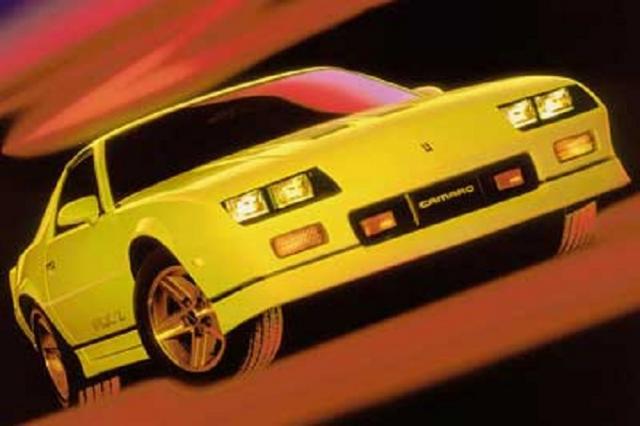
The IROC-Z captured the essence of the race-bred Camaros driven by guys like A.J Foyt and Richard Petty.
1985
A sportier version of the Z28 was offered. Dubbed the IROC-Z, it was styled along the lines of the International Race of Champions Camaros. The T/A got a complete makeover; new ground effects, bumpers, hood, taillights, wheels, rear spoiler, and integrated fog lights were the most notable changes to the ’85 T/A. They could be ordered with any of the three 5.0L’s, which included the all-new Tuned Port Injected (TPI) version (215hp Camaro, 205hp T/A), and the L69 (190hp).
1986
A carryover year, apart from new colors and a third brake light.
1987
Gone were Berlinetta and S/E, replaced by the Formula and LT Camaro. The Corvette’s L98 TPI 350 became available, producing 210hp in Formula/Trans Am, and 225hp in Z28/IROC-Z models. An ASC convertible version of the IROC was available for the first time this year, along with the hardtop and T-top Trans Am GTA.
1988
The LT and Z28 Camaro were discontinued, and only the base and IROC-Z remained. Because of this the IROC was now available with any V8; 170hp TBI 5.0L, 225hp TPI 5.0L, and 230hp TPI 5.7L. The convertible was now available through GM, but only for the Camaro, and only with the 170hp V8. The GTA was now available with any V8 engine. The rest of the lineup was basically carried over.
Two new models became available; the return of the RS as the new entry-level Camaro, and the 20th Anniversary Turbo Trans Am Indy 500 Pace Car. The TTA was equipped with the 3.8L Buick GN motor.
1990
The nineties kicked off with an abbreviated production run for the F-bodies, as everyone knew the face-lifted ’91 models were coming.
1991
The IROC-Z was discontinued in favor of the original Z28 nameplate. All F-bodies sported updated styling.
Firebirds were available in a convertible version for the first time since ’69.
The SLP Firehawk was introduced, all were based on hardtop Formula 350‘s that had been modified to produce 350hp. A total of 25 Firehawks were made during ‘91-‘92.
1992
The final year of the third generation went out with a 25th Anniversary Edition available on Camaro.
It was a low-production year as the last two had been, due to the fact that the new fourth generation car was just around the corner.
1993
Featuring all-new sheet metal front to back, along with a completely revamped interior, the fourth-generation was a clean slate for the F-body twins. Gone were the old engines. In return we received a new 3.4L V6 and a 5.7L, 275hp Corvette LT1. Both the Camaro and Firebird were only available in hardtop coupe or T-tops.
The Camaro was available in two trim levels; base and Z28, the Firebird came in three flavors; base, Formula, and Trans Am. The Camaro would go on to pace the Indy 500 yet again, for the fourth time. The Firehawk returned for 1993, and would be available in 300hp-315hp through the 1995 model year.
A 25th Anniversary Trans Am was produced, featuring the traditional white/blue color combo. Convertibles were made available again, and there were some electronic improvements made to the engines and transmissions.
1995
In addition to the current V6, there was an available 3.8L, 200hp V6 engine choice for base cars. The LT1 would pick up 10hp for a total of 285 this year.
1996
General Motors decided to spice things up, and did so by making the 200hp V6 for both standard models, and offered optional Ram-Air on its LT1-equipped cars.
SLP would be called upon to transform factory-produced Formulas and Trans Am’s into WS6-versions with Ram-Air, increased horsepower (to 320hp), specific badging, 17-inch wheels, a power steering cooler, and an upgraded suspension. Z28’s were available with this treatment as well, and would be transformed into SS Camaros. Firehawks were rated at 310hp-320hp, depending on upgrades.
1997
An optional 330hp LT4 package was available on Ram Air cars, and very few were made. There was a 30th Anniversary Edition Camaro offered on both Z28 and SS. It featured Artic White paint and Hugger Orange stripes; a homage to the ’69 Indy Pace Cars, and served as the Daytona 500 Pace Car.
1998
The final refresh of the F-cars before their demise in 2002. The Formula convertible was dropped.
Real news came with the all-new LS1 V8 that incorporated an all-aluminum design with 305hp in standard form, and 320hp in SS and WS6 versions. The Firehawk was MIA for the ’98.
A 30th Anniversary Edition T/A was created to commemorate the occasion. It featured a paint scheme similar to the ’69 T/A, a WS6 Performance Package, special badging, tinted blue chrome wheels, and a white leather interior. Firehawks returned with 327hp.
2000
Apart from the new maroon hue and a revised throttle linkage for V8-equipped, manual transmission cars, nothing changed.
2001
All LS1-powered car would receive the revised intake manifold for a 5hp increase across the range, for a total of 310hp (Z28, Formula, Trans Am) and 325hp (SS, WS6). Formula WS6 was dropped this year.
Firehawks packed 335hp-345hp. The 10th Anniversary option was reminiscent of the ‘70s SE Trans Am’s; with black paint, gold accents, and gold 17-inch wheels rounding out the package.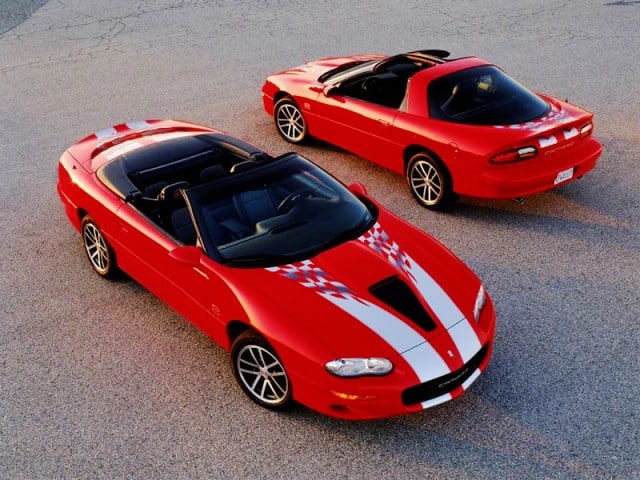
2002
The end of the line saw all LS1-equipped ‘Bird coupes equipped with T-tops. Camaros carried over with nothing more than a 35th Anniversary badge on the dash of all models, and both cars had optional commemorative appearance packages.
The Camaro SS 25th AE would get a Bright Red Metallic hue, while WS6 CETA’s were painted in “Collector Yellow.” Both were equipped with special badging, interior embroidering, unique stripes, and black powder coated wheels. Both cars would come complete with a trophy mat, embroidered floor mats, and an exclusive book. Firehawks offered nothing special for the final year.
The F-cars are notoriously known for their presence in the world of racing, and would go on to dominate the ¼-mile drag strips, road courses, and the boulevards of America for almost five decades. As we all now know, the Camaro did return for the 2010 model year, but was now built on the same Zeta architecture that was found under the Pontiac G8 sedan/Holden Commodore, thus, discrediting it as a true “F-body.” Obviously, the Firebird never returned, thanks in large part to the demise of the Pontiac brand.



